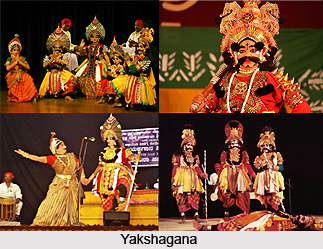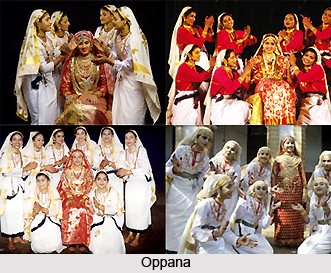 There are persons from three religions namely the Hindus, Muslims, and the Christians, live side by side in this district. Each religion living here influences the other culture as well. Here in this district Communal harmony and religious tolerance are the remarkable characteristics of the people. Though the people speak different languages there is no barrier on the cultural unity. Mosques, Temples and Churches stand side by side as symbols of communal unity. There are three major religious groups viz. Hindus, Muslims and Christians.
There are persons from three religions namely the Hindus, Muslims, and the Christians, live side by side in this district. Each religion living here influences the other culture as well. Here in this district Communal harmony and religious tolerance are the remarkable characteristics of the people. Though the people speak different languages there is no barrier on the cultural unity. Mosques, Temples and Churches stand side by side as symbols of communal unity. There are three major religious groups viz. Hindus, Muslims and Christians.
Yakshagana:
Yakshagana is one of the most important folk theatres of Karnataka and Kasargod district has brought fame to this region. Every village in Kasargod Taluk is familiar with this art and there are a good number of artistes who performed the art till now. Yakshagana was originally known by different names like-Bayalata which means play played in open air in Kannada language. The stories of Yakshagana were depicted from the Ramayana , Mahabharatha , Bhagavatha and from other mythological episodes
The story of the art form are sometimes stereotype like it shows the struggle between the good and the evil and the ultimate triumph of the Good. Almost all ancient arts are related to God or worship of God. Ethical Values are better inculcated in the minds of people through entertainment. Yakshagana no doubt is an ancient performing art. According to some, Yakshagana has evolved from the ancient form of Bhutha-Worship or Theyyam. Bhutha-Worship is very popular in South Canara of Karnataka and Kasaragod Dist. of Kerala. In the process of evolution Yakshagana was also influenced by the Folk Dance, Song, Sanskrit Drama and also from Bharata`s Natyashasthra. South Canara Dist. and Kasaragod District of Kerala is the motherland of this art form. Parthisubba is one of the Pioneers of Yakshagana and he was from the Kasaragod district.
The dance drama Yakshagana is broadly divided into two 1.Moodalapaya and 2.Paduvalapaya. The Moodalapaya is divided into Doddata and Sannata, which are crude forms of Yakshagana. The Paduvalapaya is again divided into Thenkuthittu and Badaguthittu. The Badaguthittu is very popular in North Canara Dist. of Karnataka and Thenkuthittu is in the former South Canara Dist.including Kasargod Dist. These two groups are distinguished by their costumes used by the troupes and the dance style or Angika. Thenkuthittu costumes resembles with the Kathakali to a certain extent. The term Yakshagana is mainly a style of music and it is a musical dance drama played in the open air. In Yakshagana music and speech go hand in hand and in such a manner it could reach a good distance without modern sound system.
The main attraction of Yakshagana is stagecraft where characters like Gods, Demons and Sanyasis are presented in a supernatural atmosphere. The audiences are carried to a world of fantasy while watching this art form. In earlier days it is performed usually at night. The stage of Yakshagana is rectangular in shape measuring about 15`x 30`.
Bhagavatha who sits with his accompaniment occupies one side of the stage floor. Bhagavatha is the Narrator, Director or can be called as Suthradhara of the play. He also sings with the accompaniment of Tala or Jagate Mridanga or Maddale, Harmonium or Shruthi and Chakrathala. In earlier days oil lamps were used to light the stage. The text of the yakshagana is called `Yakshagana Prasanga` which is narrated in sets of songs. These songs are set of different Ragas and Talas. There are about 100 ragas in yakshagana. Some of the Ragas of yakshagana are not heard of in Karnataka Music viz., Panchagandhi, Gopanitem Kore, Koravy etc, The characters will dance to the tune of the songs followed by the dialogue in kannada. The yakshagana is a total theatre because it has everything of a performing art. It can entertains and enlighten both the learned and the illiterate. The yakshagana performances starts and ends with the prayer to Lord Ganesha. It is because of the fact that Lord Ganesha is called as the sidhdhidata and everything should starts with the name of this god.
Systematic training in dance, music, dialogue and makeup or Dressing is necessary for an artist. Dialogue and makeup can be learnt only by practice. These artists express Navaras or Veera, Sringara, Karuana etc. All forms of Abhinaya viz., Angika, Vachika, Aaharya and Bhava follow a fixed development over the centuries. The only art to which the yakshagana of coastal Karnataka can be compared is Kathakali in Malayalam. But the highly stylized expression of motions through the various Mudras, which are the speciality of the Kathakali, is not observed here in this art. The Characters of this art can be distinguished as Romantic and also demonical.
The Role of Karna, Arjuna etc are treated as romantic role using colourful and pleasing costumes. Ravana, Mahishasur, Duryodhana etc are treated as demonical role and their facial makeup is very complex resembling Kathakali techniques painted by the artists himself. The artists playing Satvika and Sringara roles use green shirts named Dagale. Rajasa use Red shirt and Tamasa black shirt. The dress of a character depicts its habit and behaviour. The main alankara of the head is called Kedge-Mundale, Mundas or Pagadi Kirita Kesarithattu and Mudi. The main colour for the face decoration is called Aradala or Chayam, Ingalika or red, Green, Kadige, Calcium, rice powder and Kumkuma and the colour of the face is changed according to the nature of the character.
 There is another type of Yakshagana called `Yakshagana Koota` or `Talamaddale`. In this art form the artists perform it without makeup and costumes. Musical accompaniments are the same as Yakshagana Bayalata with `Vachikabhinaya` and the artists create a fascinating dialogue between themselves according to the text of the play.
There is another type of Yakshagana called `Yakshagana Koota` or `Talamaddale`. In this art form the artists perform it without makeup and costumes. Musical accompaniments are the same as Yakshagana Bayalata with `Vachikabhinaya` and the artists create a fascinating dialogue between themselves according to the text of the play.
There are about 10 troupes of Yakshagaga Bayalata in this Dist. Some troupes even have the heritage of 100 to 150 years.
Bombe-yatta or puppet Yakshagana:
This Yakshagana Bombeyatta or Puppet show is an art form of Kasargod District and South Canara district in Karnataka State, which has a unique style and thus became very popular.
The string puppets and rod puppets with colourful costumes and dresses are used to present the form of art. The movements of the dolls are monitored and controlled by strings and rods. Yakshagana is presented through puppets and hence it is known as Yakshagana Bombeyatta. Puppets made out of wood are painted and dressed according to the character in the story. Bombeyatta is controlled from a curtain chamber specially put up behind the seen for the purpose. Musical instruments are also used in this presentation. Different puppets enact different characters in accordance with the story telling and also matching with the songs.
Now this art form is on the way of extinction. There is only one troupe in Kasargod District, which preserve this excellent art form. The Sri.Gopalakrishna Yakshagana Bombeyatta Sanga, located near Sri.Bhagavathy Temple, Pulikkunnu, Kasargod is the only organization that promote this puppet show till now. They are presenting their programmes in various places in and out of the state. The troupe had also participated in the international puppet festival held at Lahore in Pakistan.
Muslim arts:
The Muslims has adopted several foreign and Kerala visual art forms and made them their own with suitable changes. Of the several forms of art popular among the Mapplias are Aravana or Duff Muttu, Kolkali, Oppana etc. these are fast dying out with the initiation of modern forms of entertainments. Some of them are purely Arabian in origin, while others are either original or partly original or partly foreign. Following are the some of the famous Muslim arts, which are prevalent in the Kasaragod District.
Oppana:
Oppana is a ritual full of song and dance. It resembles the Kaikottikkalli practiced by women in Kerala. But it has more resemblance to the song and dance ritual prevalent in Arabian countries. In this dance form the women sit and swing their bodies as in a dance performance. It goes far into the night. It is held on the occasion of adorning the bride`s hand and feet with henna or Mailanchi.
It can also held on the Circumcision of boys, first menstruation of girls, ceremonial bath of woman on the 14th day after parturition etc. on the occasion of henna ceremony eight or ten women sit around the bride and sing songs, or stand around her singing, in praise of the bride and dancing. On the night previous to the marriage, in the bridgroom`s house also his friends stand and sing in praise of the bridegroom. As an art it is performed in the stages. Students and people of other culture irrespective of their cast and creed perform this art for competitions and in various functions. There are famous oppana troupes in the District. There is no doubt that it pleases the visitors in a great manner and also make a firm position in its form.
Aravana Muttu:
The Muslim people of Kasargod perform this art at the time of marriage or Urooses. They also perform this at the time of other functions and ceremonies connected with mosques. The Aravana or Duff is a musical instrument of Arabian origin. In the form of art like Aravana Kalli, Duff muttu or Duff Kalli, the variously called the players who are usually six in number stand or sit facing each other sing songs, swing the body in different directions, just like in dance. They also produce rhythmic sounds by striking with their palms or figures on the duff. There are several troupes of Duff Muttu connected with mosques and Madrassa. This is also performed in the stage as an art from and competitions are also arranged.






